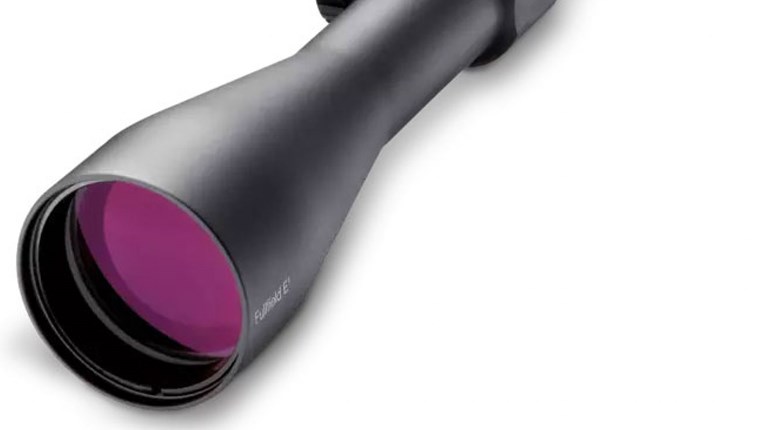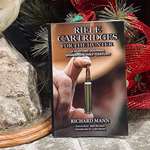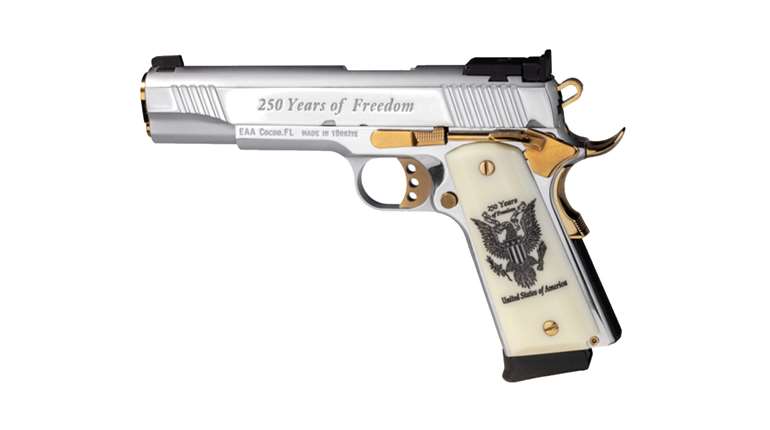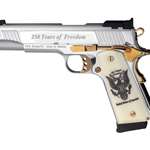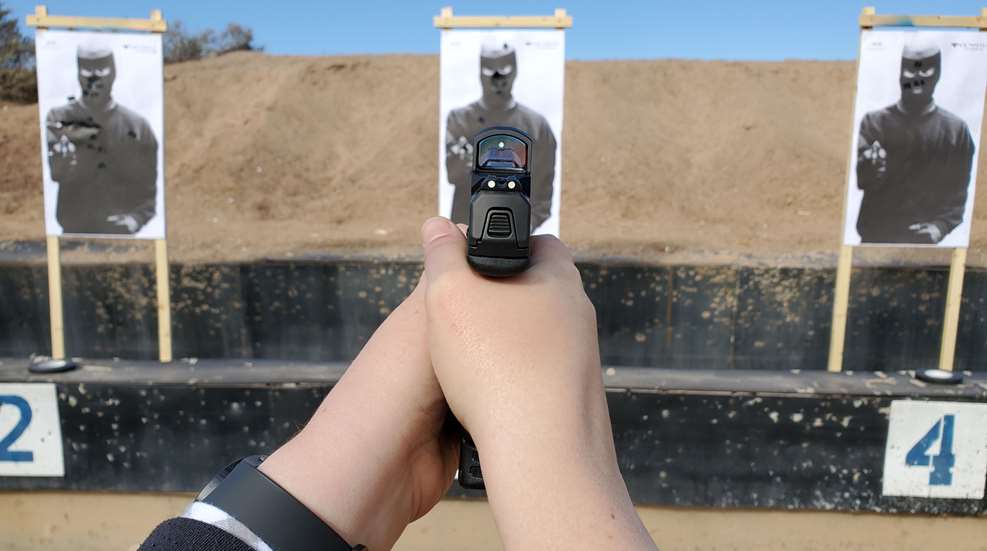
Some people can pick up a handgun, receive 30 seconds of instruction on what to do, then aim it at a target and hit it almost every time. Handgun shooting seems to come naturally to them.
I am not one of those people.
Handguns are hard for me; they always have been. I have struggled for years to get to the point where I have passable (not good) accuracy. Even now, after multiple instruction courses and countless hours of at-home practice, I’m not as good as I’d like to be, and I often find myself skimping on one of the fundamentals of good shooting. That said, I’ve made a lot of strides for a girl who didn’t take to handguns naturally, and a lot of that is due to the following five tips. If you’re struggling, too, see if any or all of these can help you.
1. Focus on the Front Sight
This is a fundamental rule of good handgun shooting; maybe the fundamental rule. For maximum precision, your focus must be on your sight in the foreground while the target is blurry in the background. The trouble is, taking the focus off our target is totally against human nature—we want to see what we’re trying to hit, especially if that thing is threatening us. Focusing hard on your front sight forces you to make aiming your brain’s primary job. This is true whether you’re using iron sights, a red-dot optic or a scope with a reticle.
Line up your rear and front sights with the target, then switch your focus to the front sight. Take your time; you’re fighting a natural instinct, and it takes time to train this rule until your body wants to do it without you having to remind yourself. You must give yourself time to get used to what it looks like to see a blurry target in the background with a sharply focused sight hovering over it.
Note that there are some times when some shooters choose to focus on the target rather than the front sight, primarily in speed competitions, but that’s a more advanced technique best applied by accurate shooters under specific conditions. Do not get hung up on this until you’ve really nailed focusing on the front sight and gotten your accuracy to a place you’re happy with.
2. Play With Your Grip and Thumb Position
Getting a proper grip on the gun will offer you maximum control over the pistol and the recoil generated at the shot, and you can’t shoot well if you’re allowing recoil to push the gun (and your hands) all over the place. If you’re struggling with accuracy, try adjusting your grip.
Grip the gun as high as you’re able to without impeding the slide, with the web of your hand between the thumb and index finger pressed up against the rear tang or beavertail. The closer your hand is to the slide as it moves back and forward again, the better you can control the recoil.
Wrap your support hand around your shooting hand at the grip, again, as high as you’re able. Pay attention to where your thumbs settle. My shooting-hand thumb rests on top of my support-hand thumb, both pointing forward. Some people like to tuck the shooting-hand thumb down. If you’ve been doing it one way and having accuracy problems, try it the other way and see if you notice any improvement. If your hands are kind of loose, tighten up your grip and move your hands higher if you can. You need to hold the gun firmly, but not with a tight death grip, as that will introduce too much tension and tank your accuracy.
3. Work on Your Trigger Press
Note where your trigger finger is making contact with the trigger. You want to center the trigger finger on the pad between the first joint and the fingertip. If you don’t put enough of the pad on the trigger and your finger makes contact with it too close to the fingertip, you’ll tend to shoot to the left of where you’re aiming. If you put too much finger on the trigger, pulling it with the first joint, you’ll tend to shoot to the right.
Press the trigger to the rear slowly and steadily until the gun fires. But wait—you’re not done! Hold the trigger back for a second as a good follow-through, then slowly let off the trigger just until you feel it reset. If you need or want to shoot again, you can do so now. If you don’t, your finger can come all the way off the trigger.
Dry-fire with an unloaded gun pointed in a safe direction is a great way to practice proper trigger press. You don’t want the gun to move when you pull the trigger—if it does, you’re exerting too much or too little finger on the trigger or your grip isn’t right (usually too tight). You can try having someone else balance a quarter on a flat part of the gun, then seeing if you can pull the trigger without the coin falling off. Alternatively, a training aid like the MantisX10 system is a great tool to help you analyze your dry-fire mistakes and shorten your learning curve.
4. Control Your Breathing
The more still the gun is at the moment you pull the trigger, the more accurately you will shoot—but the problem is, we can never be completely still due to all sorts of factors like muscle movement and the movement of our own heart, blood and lungs within our bodies. One thing we can control here is our breathing.
You want to press the trigger at your natural respiratory pause. Some people like to take a breath and let half of it out, then hold their breath and squeeze the trigger. I find the act of stopping and holding my breath distracting, so I breathe naturally and press the trigger at the bottom of one exhale while my body takes a short pause before starting the next inhale. Experiment with both options to see what works for you.
If you take too long to shoot, your muscles will start to fatigue, and you’ll start to introduce other problems related to not breathing. This is common with new shooters who are trying to line up the “perfect shot,” especially if they’re working on a slow, steady trigger press. If you find yourself getting wobbly or out of breath, take a break, lower your arms and try again in a second.
5. If It’s Not Working, Change Something
When people say “practice makes perfect,” what they really mean is “perfect practice makes perfect.” Just punching holes in paper over and over is not teaching you anything unless you are seeing what works and what doesn’t, making adjustments and testing the new way of doing things. Don’t stay at the range all day missing in the same spot, thinking that if you just keep going, it’ll get better. It won’t get better unless you change something.
If you’re at the range and can’t hit the bullseye, pick one of the other four items on this list to change. You can work on all of them at the same time, but don’t overwhelm yourself—it’s tough to get your brain to remember multiple things at the same time. Again, dry-fire practice at home with an unloaded gun will help shorten your learning curve.
Remember that all of these things are done slowly at first, then speed up as things begin to feel more natural and you improve. When you’re first starting out, you might take five or more seconds to get one really good shot off that you feel great about, where you remembered to hold the gun properly, press the trigger slowly and steadily without jerking or coming off of it, and focus on your front sight. That’s OK. When you are starting out, you want to worry about accuracy, not speed. Speed will come later when you’ve got the fundamentals down.












